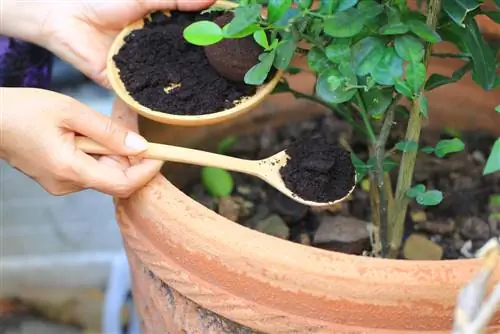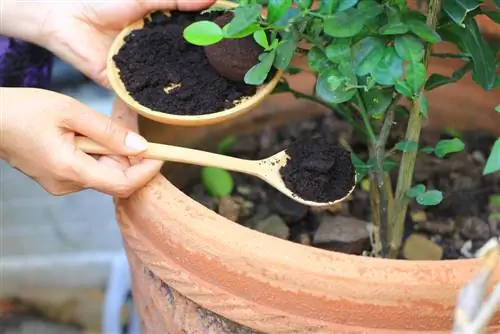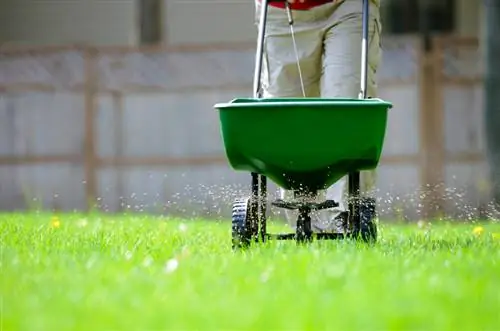- Author admin [email protected].
- Public 2023-12-16 16:46.
- Last modified 2025-06-01 06:02.
In general, planted trees are perfectly capable of supporting themselves via their root system. However, with poor soil and heavy planting, a nutrient deficiency can still occur due to competitive pressure - especially if the gardener is very tidy and always rakes away autumn leaves, for example. A soil test provides information about which nutrients are missing and whether fertilization is necessary.

How should you properly fertilize trees?
When fertilizing trees, a soil test should be carried out to determine missing nutrients. Organic fertilizers such as compost, manure or horn shavings are preferred. Fertilization should be done a maximum of every two years and large trees may benefit from mineral fertilization if there are deficiencies.
Principles of tree fertilization at a glance
For quick readers, we have created a summary of the article here, which shows the most important principles of fertilizing trees at a glance.
- A soil sample provides tangible evidence of missing nutrients and optimal fertilization.
- Provide trees with organic fertilizers if possible.
- These are applied at the beginning of the growing season.
- A second fertilization is carried out by the end of June at the latest.
- Mineral fertilizers are generally only necessary in the event of deficiency symptoms.
- Potted trees also benefit from mineral fertilizers.
- When it comes to fertilizing, less is often more - over-fertilization results in sick trees.
When fertilization is necessary
First of all: Fertilizing trees from blue haze is often a bad idea, because most garden soils these days are over- rather than under-supplied. Therefore, a previous soil sample that is sent to a state or private soil testing center and evaluated there makes sense. With the result of the laboratory test you will also receive a fertilizer recommendation, with which you can no longer go wrong. The fact that fertilization may be necessary for a tree and that there may even already be a deficiency can be recognized by characteristic features:
- The otherwise vigorous tree suddenly slows down in growth.
- Shoots and leaves wither.
- The flowering also decreases, as does possible fruit formation (e.g. in fruit trees).
- The foliage becomes pale, sometimes the leaf veins are darker in color.
- The tree sheds leaves during the growing season.
But before you resort to fertilizer when you see these signs, take a closer look at the causes of such changes. In many cases, diseases or pests are behind it instead.
When it comes to fertilization, less is more
Basically, planted trees should be fertilized a maximum of every two years, which is usually completely sufficient. Since over-fertilization can have just as serious consequences as severe under-supply, you should also prefer organic fertilizers - these are only absorbed after about three to four weeks and then only gradually, so over-fertilization is unlikely. Suitable organic fertilizers are
- ripe compost (€43.00 at Amazon)
- Stable manure (cattle, horses, sheep - no poultry, especially no pigeon manure!)
- Horn shavings, horn meal
- Lawn clippings, wood chips, leaves
- Wood ash
- Rock flour
- Algae limestone
Most fruit trees are adequately cared for according to this scheme:
- Every 3 - 5 years, spread the compost onto the tree disc and incorporate it
- Add rock dust and seaweed lime
- Fertilization with mulching material, e.g. E.g. lawn clippings, cover
- water thoroughly
Trees that are sensitive to lime, such as magnolia, are better fertilized with manure instead of compost.
Mineral fertilization for deficiency symptoms
Mineral fertilization is only recommended in the case of severe deficiency symptoms, such as iron or potassium deficiency. Otherwise, garden trees will quickly be oversupplied with special tree fertilizers.
Tip
Lime-loving trees benefit from a coat of lime for various reasons.






